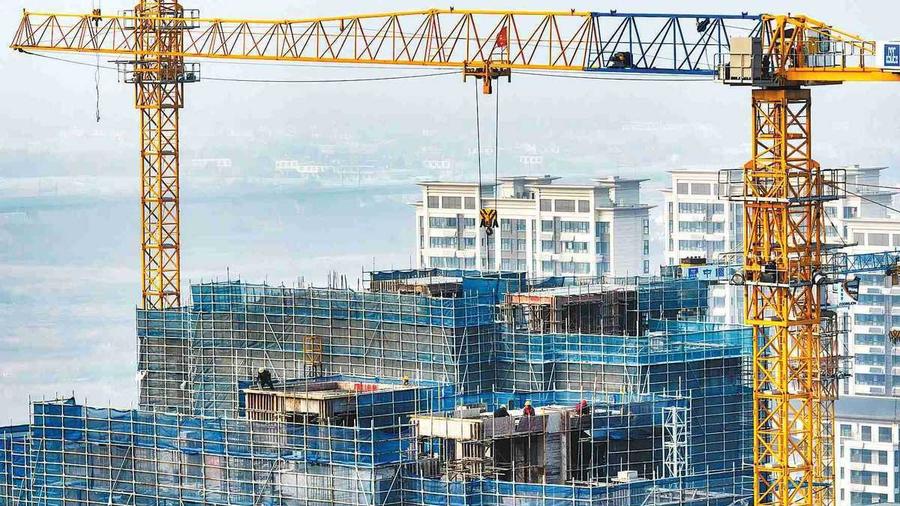 This undated photo shows the construction site of an affordable rental housing project in Hefei, Anhui province. (RUAN XUEFENG / FOR CHINA DAILY)
This undated photo shows the construction site of an affordable rental housing project in Hefei, Anhui province. (RUAN XUEFENG / FOR CHINA DAILY)
BEIJING - China's housing market continued to ease in April, with second-tier and third-tier cities seeing a decline in home prices, according to the National Bureau of Statistics Wednesday.
New home prices in four first-tier cities — Beijing, Shanghai, Shenzhen and Guangzhou — edged up 0.2 percent month-on-month in April, moderating 0.1 percentage points from that in March, according to the NBS data.
A total of 31 second-tier cities witnessed a month-on-month decline of 0.1 percent in new home prices, while 35 third-tier cities saw a month-on-month decline of 0.6 percent in new home prices
Prices of resale homes in the four cities inched up 0.4 percent month-on-month, unchanged from the growth in March.
A total of 31 second-tier cities witnessed a month-on-month decline of 0.1 percent in new home prices, while 35 third-tier cities saw a month-on-month decline of 0.6 percent in new home prices.
ALSO READ: Experts see home market staying steady this year
Wednesday's data showed that the resale home prices in second-tier cities edged down 0.3 percent on a monthly basis, while those in third-tier cities went down 0.3 percent month-on-month.
Home prices in the 70 major cities demonstrated an overall easing trend as the number of cities that notched a decrease in home prices increased, said the bureau's senior statistician Sheng Guoqing, adding that on a year-on-year basis, these cities saw their housing prices decline or register slower growth.
READ MORE: Housing eyes stability, growth on policy support
On a year-on-year basis, new home prices in first-tier cities rose 3.9 percent in April, narrowing 0.4 percentage points from that in March. New home prices in second-tier cities went up 1 percent year-on-year and those in third-tier cities decreased 1.5 percent year-on-year.


